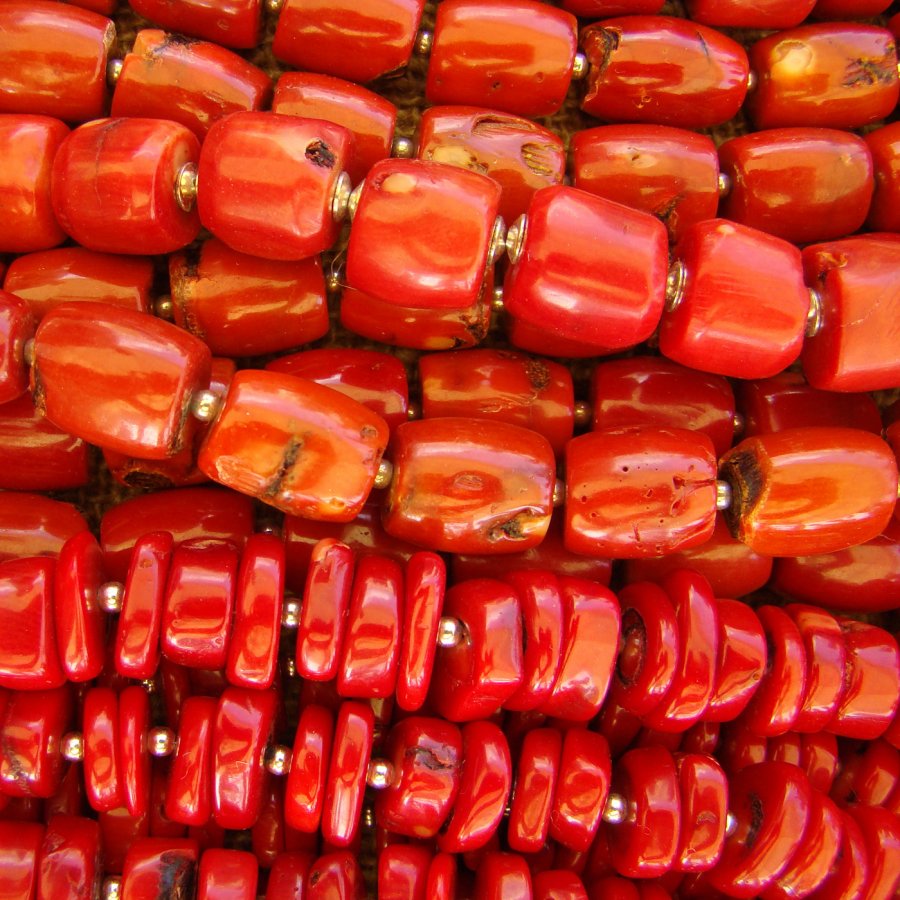Coral (Indian: Moonga; Italian: Corallo) is an organic substance formed as a branch like calcareous framework by a microscopic marine organism known as coral polyp. It is formed by the accretion of colonies of these tiny marine animals. The two main species are the corallium rubrum and corallium nobile.
Bamboo corals (Gorgonian Coral) from Taiwan are less-expensive, highly porous and gray to white color which are dyed in several colors, mostly in red, and sold as red coral. Absence of closely packed parallel line on the surface of sea bamboo coral is the key identifying feature to separate it from red corals. Generally, the gap between two parallel lines on the surface of sea bamboo coral is much more than that found on natural red coral.
Natural corals are sourced from Mediterranean Sea, Sea of Japan, Canary Isles and the Bay of Biscay. Natural coral with combination of red and orange color (red color being primary while orange color being secondary) has the best value.
Golden coral is precious due to its rarity; pink and red coral is used as bead in jewelry.





























Leave a Reply
You must be logged in to post a comment.